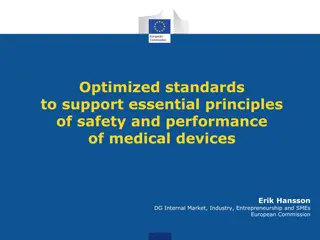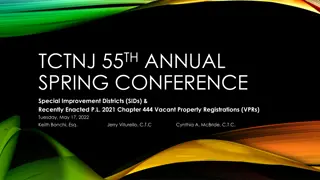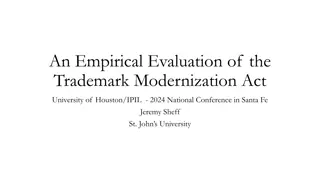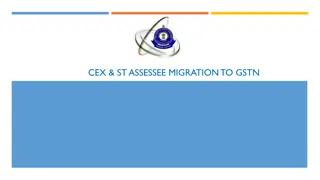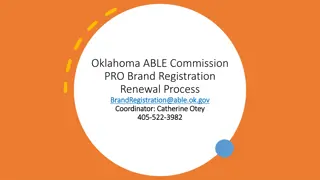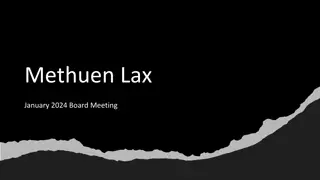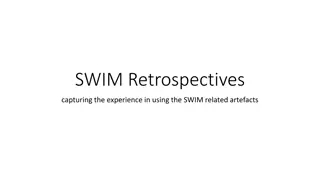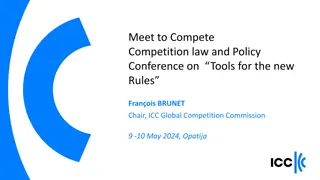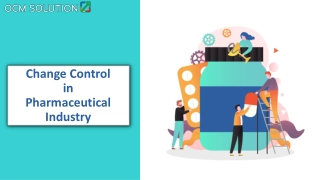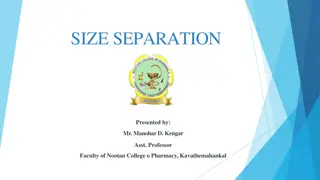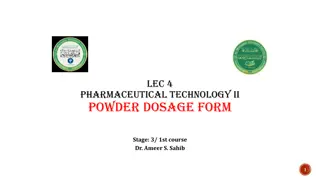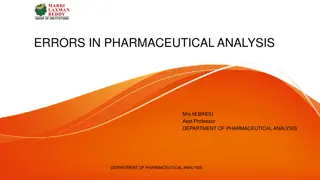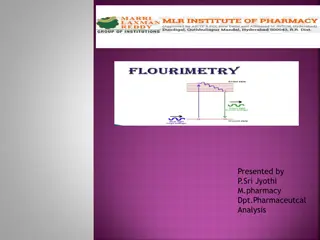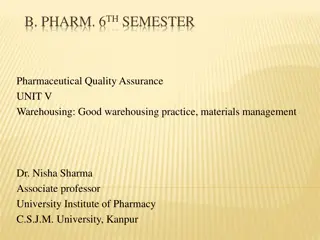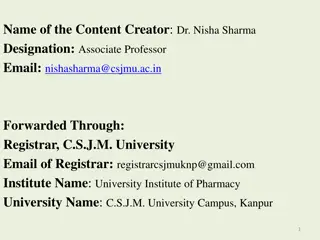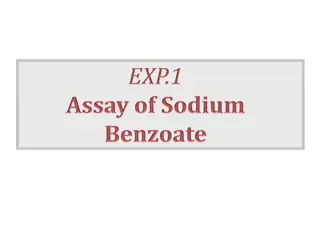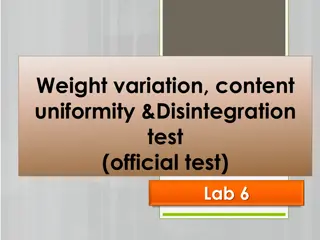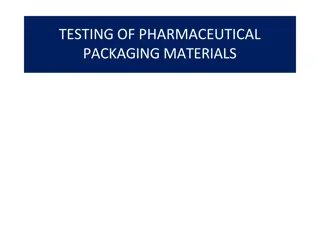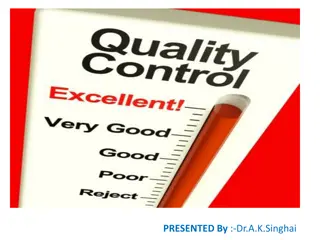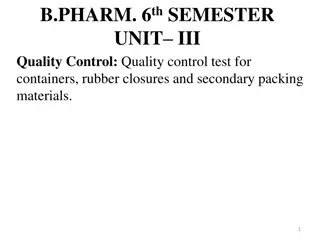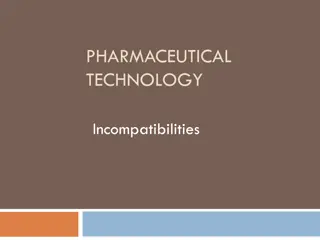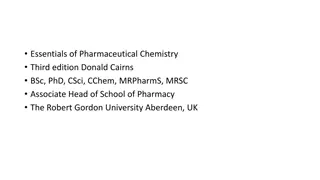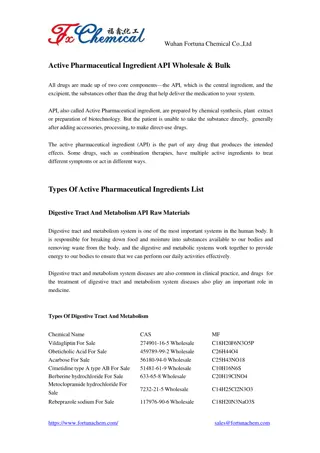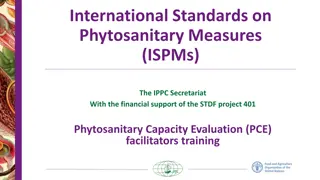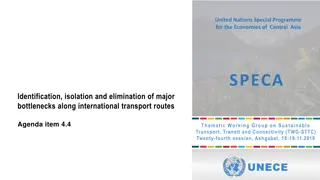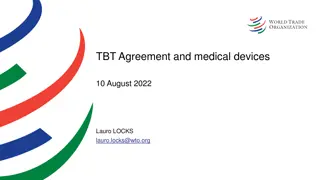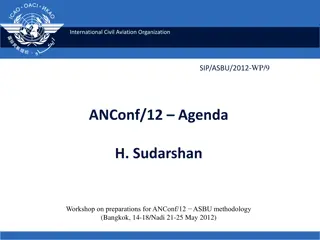International Conference on Harmonization in Pharmaceutical Registrations
The International Conference on Harmonization (ICH) aims to harmonize technical requirements for pharmaceutical registrations globally. Through the Common Technical Document (CTD) framework, it promotes efficiency, cost-effectiveness, and high quality in medicine development. The ICH provides recommendations for reducing duplication in testing during research, enhancing international collaboration, and standardizing submission formats for regulatory approvals.
- Pharmaceutical Registration
- ICH Guidelines
- Common Technical Document
- Global Harmonization
- Medicine Development
Download Presentation

Please find below an Image/Link to download the presentation.
The content on the website is provided AS IS for your information and personal use only. It may not be sold, licensed, or shared on other websites without obtaining consent from the author. Download presentation by click this link. If you encounter any issues during the download, it is possible that the publisher has removed the file from their server.
E N D
Presentation Transcript
It is defined for a paper submission as a set of pages, numbered sequentially and divided from other documents by a tab. Adocument can be equated to a file for an electronic submission.
CTD WAS OFFICIALLY SIGNED OFF IN NOVEMBER 2000, AT5THICH CONFERENCE, SAN DIEGO,CALIFORNIA. eCTD CTD
The objective is to increase international harmonization of technical requirements to ensure that safe, effective, and high quality medicines are developed and registered in the most efficient and cost effective manner. Activities have been undertaken to promote public health, prevent unnecessary duplication.
What is ICH ? The complete name of ICH is the "International Conference on Harmonization of TechnicalRequirements forRegistration of Pharmaceuticals for Human Use". The purpose is to make recommendations on ways to achieve greater harmonization in the interpretation and application of technical guidelines and requirements for product registration in order to reduce or prevent the need to duplicate the testing carried out during the research and development of new medicines. This unique project brings together the participants inthe three regions to discuss scientific and technical aspects ofproduct registration
The focus of the is to provide a common format for the preparation of a well structured submission according to the modular framework described in the ICH guidelines of the Common Technical Document for Registration for Human Use (ICH TopicM4). The CTD guidance indicates where and how available information is to be presented. The CTD is not intended to indicate what studies are actually required (Authorities can ask for specific types of data).
CTD is a joint effort of 3 RegulatoryAgencies- European MedicinesAgency (EMEA,Europe) Food and DrugAdministration (FDA, USA)and Ministry of Health, Labour and Welfare (MHL W, Japan). CTD is maintained by ICH through Expert working group (EWG). It has been adopted by several other countries including Canada and Switzerland
These different steps are called STATUSof that Guideline- STATUS FUNCTIONALITY STEP1 Development of Consensus STEP2 Text released for Consultation STEP3 Consultation outside ICH STEP4 ICH Guidelines Finalized STEP5 Implementation
Avoid generating and compiling different registration dossiers Common format will significantly reduce the time and resources Facilitates simultaneous submission in three regions Facilitates exchange of information among regulatory authorities Faster availability of new medicines.
The CTD is organized into FIVE modules: Module 1: RegionalAdministrativeInformation. Module 2: Introduction, Quality Overall Summary, Nonclinical Overview, Clinical Overview, Nonclinical Written and Tabulated Summaries, Clinical Summary Module 3: Quality Module 4: Nonclinical Study Reports Module 5: Clinical Study Reports.
The Common Technical Document is organized into five modules. Module 1 is regionspecific and modules 2, 3, 4 and 5 are intended to be common for all regions.
1. ADMINISTRATIVE 1. FDA form 356h 2. Cover letter 3. Patent information 4. Department Certification 5. Field copy certification 6. User Fee cover sheet 7. Financial disclosure information
1. CTD Table of content 2. CTD Introduction 3. Quality Control Summary 4. Non-Clinical Overview 5. Clinical Overview 6. Non Clinical Summary 7. Clinical Summary
The eCTD is the electronic equivalent to the CTD. Why electronic? Improve the submission and review process Increase accuracy of the submission Decrease total costs This specification has been developed by the ICH M2 Expert Working group and maintained by the eCTD ImplementationWorkinggroup in accordance with the ICH Process.
eCTD Changes XMLbased eCTD backbone replaces PDF Tables ofContent (index xml file).The purpose of this file istwo fold: Manage meta data for the entire submission Constitute a comprehensivetable of contents andprovide corresponding navigation aid Increase document granularity in accordance with ICHeCTD agreements. Life Cycle Management: Composed at least of an initialsubmission Incrementalupdates Only what was changed needs to be re submitted
eCTD Specification v 3.2 eCTD is a message specification for the transfer of files and metadata from industry to regulatory. The eCTD Specification version 3.2 describes many optional folders and file names.
eCTD SUBMISSION CHECKLIST- eCTD Software Software training and support from the supplier Compiling and eCTD eCTD hyper linking QC of eCTD Submit eCTD on CD/DVD or Use electronicgateway
eCTD Implementation- eCTD is implemented in 2009 ICH eCTD is an internationally driven standard designed to reduce cost in the administration, assessment and archiving of applications for marketing authorization of medicinal products for human use, to reduce the use of paper and streamline the assessment process making the system more efficient. Unlike CTD the eCTD is not mandatoryin Europe(highly recommended). NCAs are progressively adapting their infrastructure, processes and legislation to be able to receive and handle paperless applications for marketing authorization by 2009.
Benefits of eCTD Improved handling and archiving of submissions Better information management Support of Life Cycle Management ImmediateAccess to complete and up to dateinformation Search functionality for assessors and increased tracking ability Facilitated evaluation and better visibility of theprocess Reduced workload and reuse of information for assessment reports Controlled communicationwith externalexperts Better use of resources Simplified business process Better communication with industry
SFDA Plan forSubmission- Application form should be submittedonline SFDAwill require the product file in both CTD(Hardcopy) and eCTD (Softcopy) format Product file registration should follow thecurrent requirements, but in CTD format
SFDA Prospective forSubmission Learning process Step by step implementation Review of the business process Build a workflow system Pilot phase Smooth transition




